Despite Roasting Flares From Its Sun, Proxima b Might Still Have Life
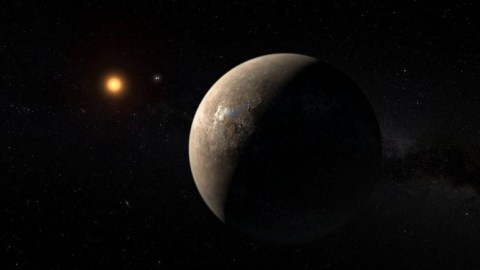
Just because humans wouldn’t do well over there doesn’t mean there aren’t incredible chances for life.
For nearly 30 years, scientists have been discovering planets beyond our Solar System: the exoplanets of the Universe. We now know that practically every star has its own planetary system, and that most of them have rocky worlds that may even house liquid water on their surfaces. Where there’s water, there may be life, and finding the first evidence of life beyond Earth is still one of the holy grails of modern science. Less than two years ago, a scientific team from the European Southern Observatory announced the discovery of Proxima b, the first exoplanet ever discovered around Proxima Centauri, the closest star in the Universe to our Sun. There are many things that Proxima b experiences that would make human life on that world nearly impossible, including the existence of spectacular solar flares striking it frequently. But despite that, life may be possible there after all. Here’s how.
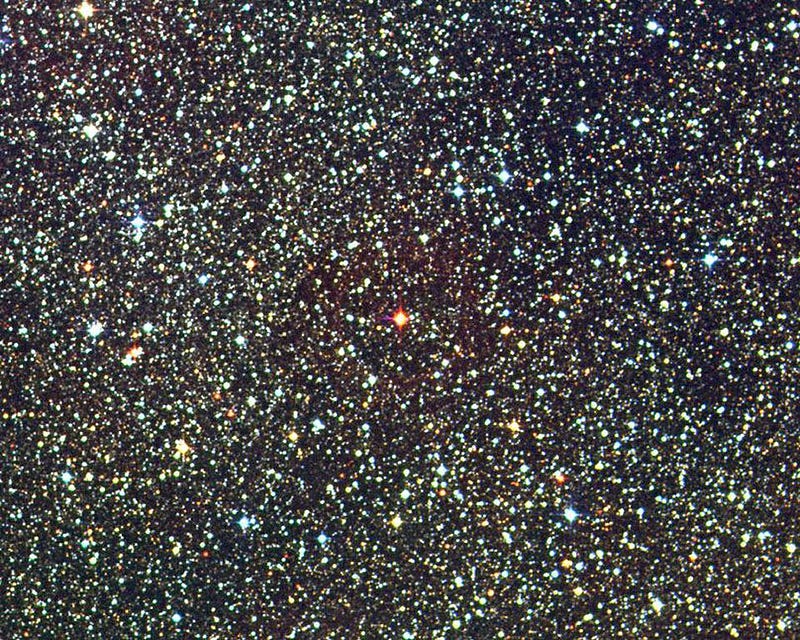
The basics: Proxima Centauri is the nearest star system to Earth, at just 4.24 light years away. And it’s getting closer; over the next few tens of thousands of years, it will come within 3.1 light years of us. The first (and so far, only) planet discovered around it, Proxima b, is it at the right distance from its star to potentially support liquid water on its surface: it’s firmly within its stars habitable zone. Proxima b also has an estimated mass of 1.3 times our own world, which implies that it’s only about 10% larger in diameter than Earth and is almost definitely rocky. The hope and speculation is that it might have an Earth-like atmosphere, the same raw ingredients and elements as our world, and most excitingly, perhaps even life on the surface.
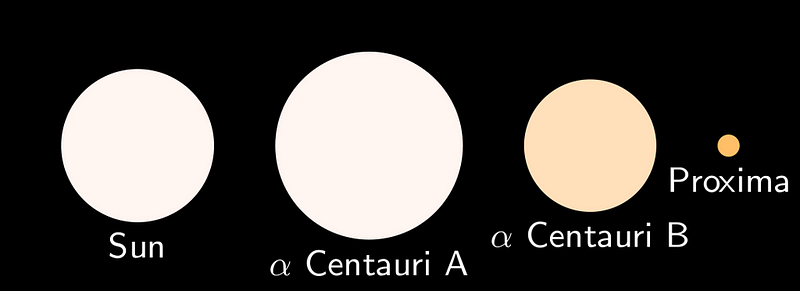
The star: Proxima Centauri itself is an extremely low-mass star, at least compared to the Sun. At just 12% of the Sun’s mass, it’s incredibly dim, giving off just 0.17% of the total light the Sun emits and just 0.005% of the visible light. Like most stars (3 out of every 4) in the Universe, and unlike our Sun, Proxima Centauri is a red dwarf star: long-lived, low-mass, cool in temperature, red in color, and emitting most of its energy in the infrared. Proxima Centauri also emits frequent, enormous flares — also typical of red dwarf stars — that come from its convective interior and very strong magnetic fields, as most red dwarfs do. It has a solar cycles like our own Sun does, but it’s only about 442 days long, rather than 11 years, and it likely flared even more prodigiously in its youth than it does today, nearly 5 billion years after its formation.
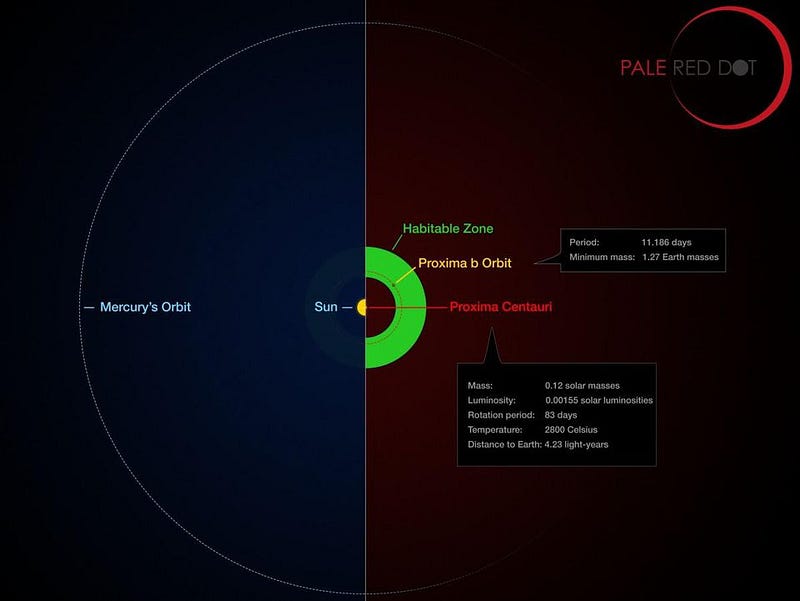
The problem: Proxima b is a lot closer to its parent star than Earth is to the Sun; instead of 365 days, it takes a mere 11.2 days to orbit Proxima Centauri. Its average orbital distance is just 5% of the Earth-Sun distance at 7.5 million km, which means that it’s got to be tidally locked to its star by now, with one roasting side, one frozen side, and an intermediate “ring” that’s probably the most temperate portion. It also means that the Sun-facing side gets ravaged with these flares frequently and from a very close distance. These flares won’t entirely strip an atmosphere away, but they will absolutely destroy any sort of UV-protecting ozone layer on timescales far faster than a planet could regenerate it. As a result, many are claiming that Proxima b is completely inhospitable to life like we have here on Earth.
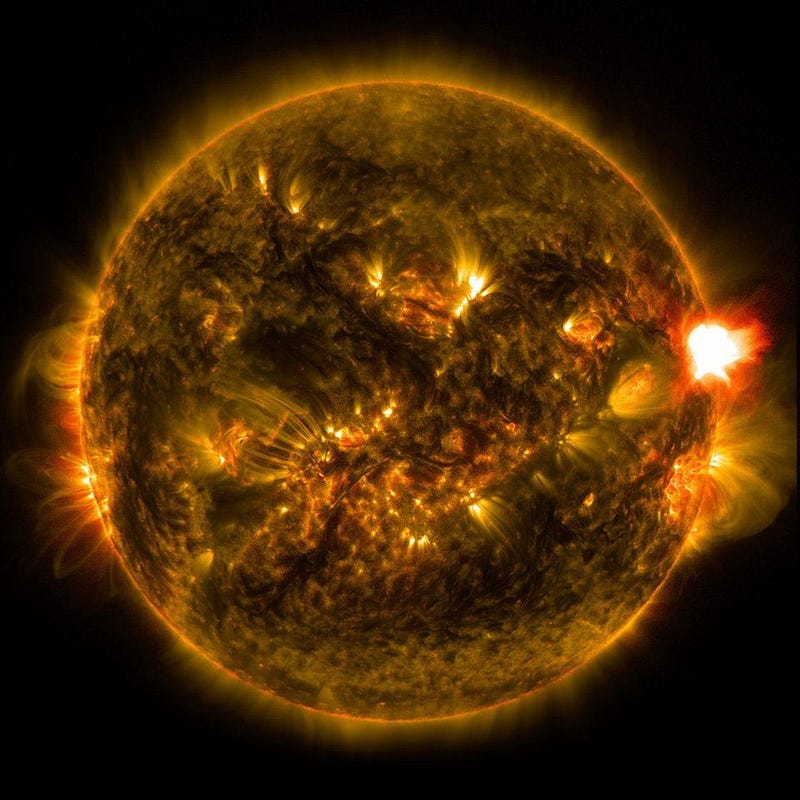
The possibilities: So Proxima b won’t have an ozone layer, which means ultraviolet, ionizing radiation can reach the surface. Because it rotates at just 9% the speed of Earth (due to its orbital period and its tidal locking), its magnetic field should be far weaker that ours is, offering reduced protection against charged particles and solar winds. As far as we can tell, the surface would be vastly irradiated by potentially deadly radiation from the Sun, ionizing atoms and molecules on the light side and potentially destroying any type of chemical-based life we could create. But those difficulties for human-like life might not pose any problems at all for the kind of life that would evolve on Proxima b.

The solutions: Depending on what’s in the atmosphere and the water on the surface, life could be an absolute cinch on this world. Winds blow from the light, hot side to the cold, dark side, providing a solid means of energy transport. The lack of protection from ionizing radiation is troubling, until you realize that Proxima b itself emits extremely little ultraviolet light, owing to its low temperature. It’s only during these flaring events, which occur approximately once every 2–3 months, that enough ultraviolet light is released to cause harm to the life it’s exposed to. And it’s true: even primitive, UV-resistant life on the surface, like lichens or mosses, would be in trouble.
But even a thin layer of protection would keep life safe. While the ozone layer won’t do, there’s another layer that would, in theory, perform wonderfully: the top ~200 meters of an ocean.
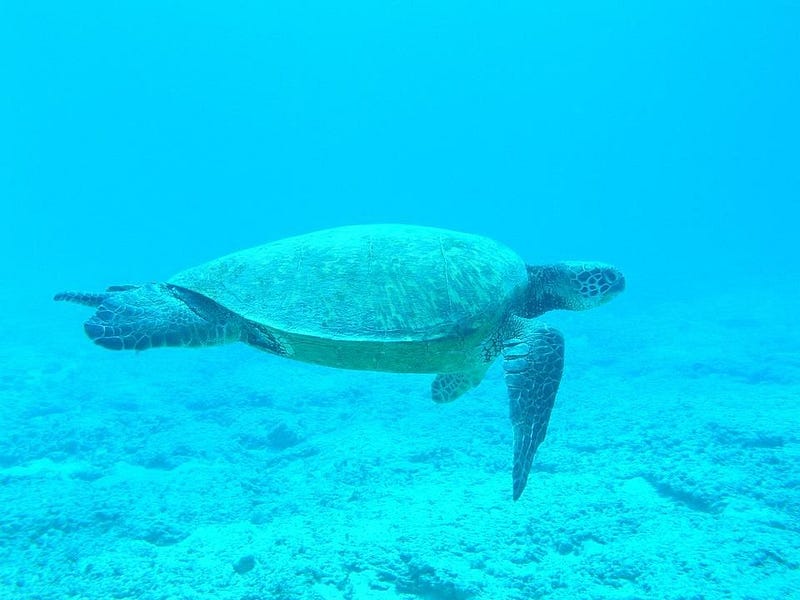
The ocean appears blue because water more readily absorbs longer-wavelength, red light than the shorter-wavelength blues. Ultraviolet light is even shorter wavelength, and therefore penetrates the ocean the best. But marine life on Earth has already figured out the key adaptation: to take refuge in deeper waters when ultraviolet light is most intense. Given that these flares are clearly visible and the same side of the world always faces the Sun, either organisms could adapt to be UV-resistant, or they could do what every terrestrial creature does, as appropriate: take shelter when danger comes. A cave, a dark place, or even deeper depths in open water would transform a potential catastrophe into a minor inconvenience.

It’s true that stars that are very different from our Sun have restrictions on what conditions their planets can have and still be habitable. For red dwarf stars like Proxima Centauri, their worlds have conditions that make it unlikely for life to have taken the exact same evolutionary pathway that life on Earth took. But that doesn’t spell doom for life; it merely indicates that alternative pathways are required to arrive at similar outcomes. Frequent flares and excessive blasts of ultraviolet radiation may spell doom if Earth-based life were subject to those conditions, but organisms that have adapted to their environments could survive these outbursts routinely. A few solar hiccups a year should pose no problem for life forms that developed under those exact. harsh conditions. On every world, after all, it should be the organisms most robust against the adversarial conditions they face that will survive.
Ethan Siegel is the author of Beyond the Galaxy and Treknology. You can pre-order his third book, currently in development: the Encyclopaedia Cosmologica.





